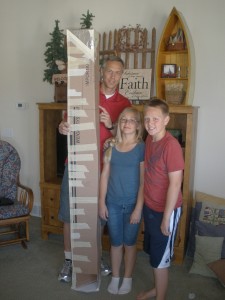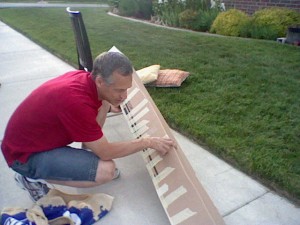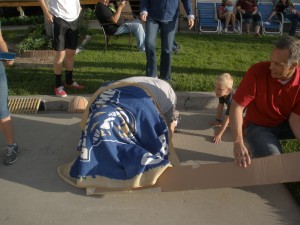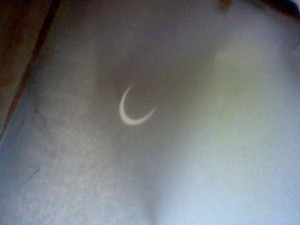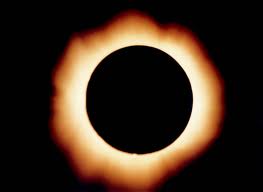 No, not the movie… an actual eclipse.
No, not the movie… an actual eclipse.
To be precise, we enjoyed an annular eclipse on Sunday, May 20th, 2012. Where we live in Utah, the eclipse lasted about 90 minutes, and at its peak, about 87% of the sun was covered by the moon. It was truly an annular eclipse as viewed in Southern Utah near Cedar City, but that’s over 3 hours from our house.
The last time I remember seeing an eclipse, I was in elementary school and we were allowed out onto the playground to view it with pinhole viewers. According to the NASA webpage, it was in 1979, and the sweet spot to view it in North America was in Idaho, but we were able to see partial coverage in Utah. Technically speaking, the last total eclipse in Utah occurred in 1994, but at the time, we were living in North Carolina and I don’t remember any chance we had to view it then.
With such an awesome chance to see something so rare, I decided to make our own device to safely view the eclipse. I remembered some of the devices we used when I was back in elementary school, and after some brief research on the internet, I found what I was looking for: a pinhole projector. You can make a simple pinhole projector just by poking a small hole in one sheet of white paper, and then holding it up above another sheet of white paper. The difficulty with this is that it is faint, and you have to be a good aim. I actually took an old box and with some help from the kids, we made a long tube. I knew that the longer the tube, the bigger the image. The exact equation is the length of the box times 0.0093, so for a box 5 feet long, that would be 60 inches x 0.0093, or an image that is 0.56 inches in diameter. We were able to construct a tube that was about 78 inches long. We used a piece of tinfoil on one end of the box and carefully poked a small hole through the smooth tinfoil. Then on the other end, we taped a piece of white paper. In a sense, it is similar to the human eye, with an iris, pupil, and retina.
Once we had the pinhole projector tube completed, we excitedly rushed outside to try it. The eclipse was just starting, and to our delight, the projector worked, especially when we covered our head and viewing area to help the image stand out more in the darkness under the blanket. Unfortunately, less than 10 minutes after the eclipse started, a bunch of clouds rolled in and obscured our view. 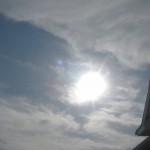 We waited about 30 minutes to see if it would clear, and from where we live, it didn’t look like it was going to happen. That’s when the chase began. We threw the projector in the back of the SUV and took off down Highway 111 towards the dampened sunshine peeking around the clouds at the north end of the Salt Lake Valley. At first, it looked like we might have to travel all the way to Saltair on the shores of the Great Salt Lake, but as luck would have it, by the time we reached Magna, the clouds had parted there and we were able to stop at my in-laws home to view it in their backyard. My father-in-law even had a welder’s mask that we could also use to watch the eclipse. It was truly spectacular!
We waited about 30 minutes to see if it would clear, and from where we live, it didn’t look like it was going to happen. That’s when the chase began. We threw the projector in the back of the SUV and took off down Highway 111 towards the dampened sunshine peeking around the clouds at the north end of the Salt Lake Valley. At first, it looked like we might have to travel all the way to Saltair on the shores of the Great Salt Lake, but as luck would have it, by the time we reached Magna, the clouds had parted there and we were able to stop at my in-laws home to view it in their backyard. My father-in-law even had a welder’s mask that we could also use to watch the eclipse. It was truly spectacular!
We took turns and marveled at the cool beauty of the celestial event. Makes you realize how small and insignificant we are in this universe.
The next total eclipse viewable from North America will occur on about August 21, 2017, followed by another one in 2024. I think next time, we will have to build a pinhole projector tube over 10-feet long – that will be fun!
© Copyright 2012 Jeff, All rights Reserved. Written For: Jeffrey Olsen
